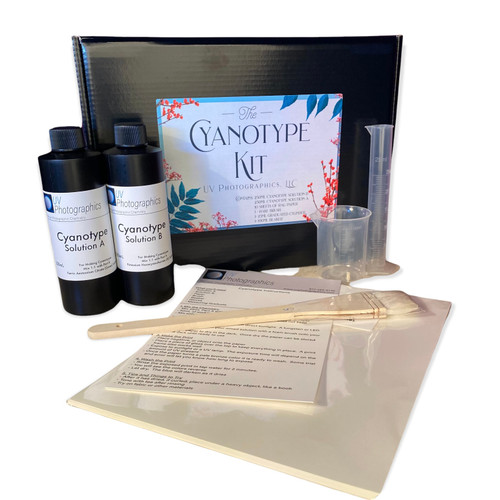Description
Sir John Herschel invented the Cyanotype process in 1842. In the cyanotype process, paper is sensitized with ferric ammonium citrate and potassium ferricyanide, and then exposed UV light to reduce a portion of the ferric salt to the ferrous state. The resulting reaction produces ferrocyanide, which gives the Prussian blue color. The process is known to fairly stable and permanent.
Negatives with along density range work best with his process and will give you a full range of tones.
Almost any paper will work with this process except for alkaline balanced papers.
The process is a relatively simple process with the following steps:
- Mix the equal parts of solution A & Solution B
- Apply to paper with a Hake brush
- Hang to dry in a dark place
- Expose in printing frame or under glass
- Rinse with tap water
- Dry
The kit includes:
- 250mL Cyanotype Solution A
- 250mL Cyanotype Solution B
- 10 sheets of alternative process premium cotton rag paper
- 100mL Beaker
- Hake Brush
- 25mL graduated cylinder
-
Additional items required:
- Contact printing frame, or two pieces of glass with binder clips
- Negative (digital, silver gelatin or collodion)
- Tap water









